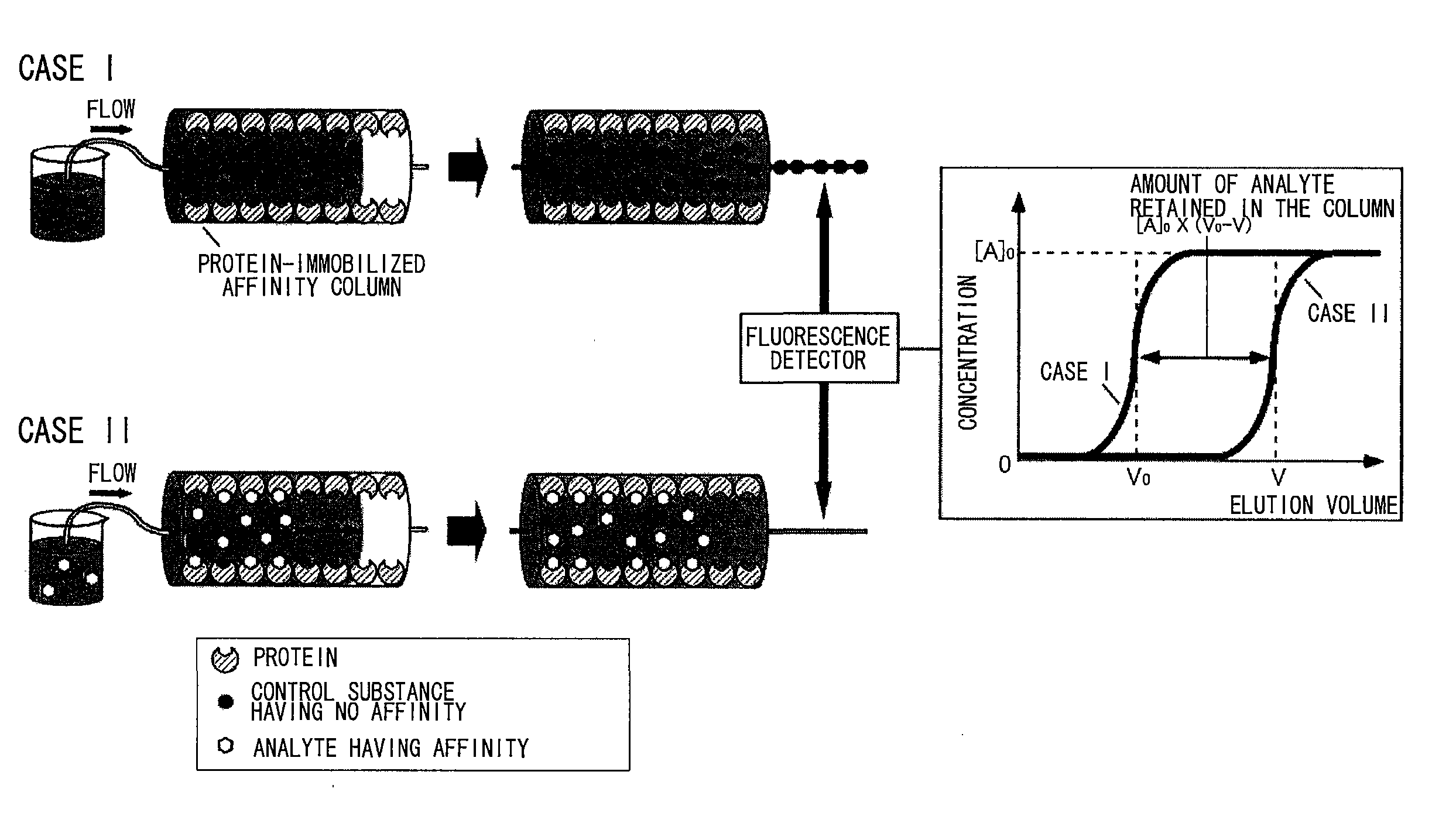Sugar chain structure profiling techniques
a sugar chain and structure technology, applied in the field of sugar chain structure profiling techniques, can solve the problems of difficult comprehensive analysis, inability to obtain sugar chain samples in small amounts, and insufficient completeness of both chemical and biological synthesis methods, so as to save time and labor, improve the accuracy of sugar chain structure estimation, and save time and labor
- Summary
- Abstract
- Description
- Claims
- Application Information
AI Technical Summary
Benefits of technology
Problems solved by technology
Method used
Image
Examples
example 1
[EXAMPLE 1] CONSTRUCTION OF A LECTIN AND SUGAR CHAIN INTERACTION DATABASE USING AN FAC APPARATUS, AND DETERMINATION OF SUGAR CHAIN STRUCTURES
[0147] Data on lectin-sugar chain interactions were collected using an automated frontal affinity chromatography apparatus (FAC-1, Shimadzu Corp.) in which two lectin columns were connected in parallel. The lectin columns required for analysis of lectin-sugar chain interactions were prepared according to the method described below: [0148] 1. Purified lectins are dissolved in a 0.1 M sodium hydrogen carbonate buffer (pH 8.5). [0149] 2. Lectins are immobilized on NHS-activated resins via the primary amino groups in the proteins. [0150] 3. Resins are prepared such that the concentration of immobilized lectins is 2 to 9 mg / mL. [0151] 4. The lectin-immobilized resins are filled into capsules (inner diameter: 2 mm, length: 10 mm) with a filling volume of 31.4 μL. [0152] 5. The capsules are sandwiched between two filters. [0153] 6. Two types of capsul...
example 2
[EXAMPLE 2] METHOD FOR ESTIMATING THE STRUCTURE OF SUGAR CHAINS WHOSE STRUCTURE IS UNKNOWN USING THE MANHATTAN METHOD
[0157] To use the patterns from combinations of interactions between various sugar chains and lectins in order to estimate the structures of sugar chains of unknown structure, a technique was used that calculates the degree of variance (degree of similarity) from the distance between two samples using a pattern search method. To verify this technique, a blind test was carried out using the interaction pattern of a subject sugar chain (query) on the interaction patterns of sugar chains of known structure (database). Specifically, for a subject sugar chain of unknown structure, the patterns of interaction with eight types of lectins were entered. Then, a sugar chain of known structure with a pattern with a low degree of variance (a pattern with a high degree of similarity) with an interaction pattern of the subject sugar chain was searched from the data stored in a data...
example 3
[EXAMPLE 3] ANALYSIS OF INTERACTIONS BETWEEN SUGAR CHAINS AND LECTINS USING A LECTIN ARRAY
(1) Preparation of Fluorescence-Labeled Glycoprotein Probe (Cy3-ASF)
[0165] Fluorescence-labeled glycoprotein probes were prepared by fluorescently labeling asialofetuin (Sigma, hereinbelow ASF) using Cy3 Mono-reactive Dye (Amersham-Pharmacia, hereinbelow Cy3), which is a fluorescent dye with a maximum absorption wavelength of around 550 nm. ASF is known to have three N-linked sugar chains and three O-linked sugar chains per molecule, and a sugar chain structure in which the sialic acid cap of the non-reducing terminal in the sugar chains is partially removed. After preparing ASF in a 0.1 M carbonate buffer (pH 9.3) such that the final concentration is 1 mg / mL, 1 mL was mixed with 1.0 mg of Cy3 powder and allowed to react in the dark for one hour while stirring occasionally.
[0166] Next, free Cy3 and Cy3-ASF were separated and recovered by gel filtration chromatography using Sephadex G-25 as t...
PUM
| Property | Measurement | Unit |
|---|---|---|
| Affinity | aaaaa | aaaaa |
Abstract
Description
Claims
Application Information
 Login to View More
Login to View More - R&D
- Intellectual Property
- Life Sciences
- Materials
- Tech Scout
- Unparalleled Data Quality
- Higher Quality Content
- 60% Fewer Hallucinations
Browse by: Latest US Patents, China's latest patents, Technical Efficacy Thesaurus, Application Domain, Technology Topic, Popular Technical Reports.
© 2025 PatSnap. All rights reserved.Legal|Privacy policy|Modern Slavery Act Transparency Statement|Sitemap|About US| Contact US: help@patsnap.com



